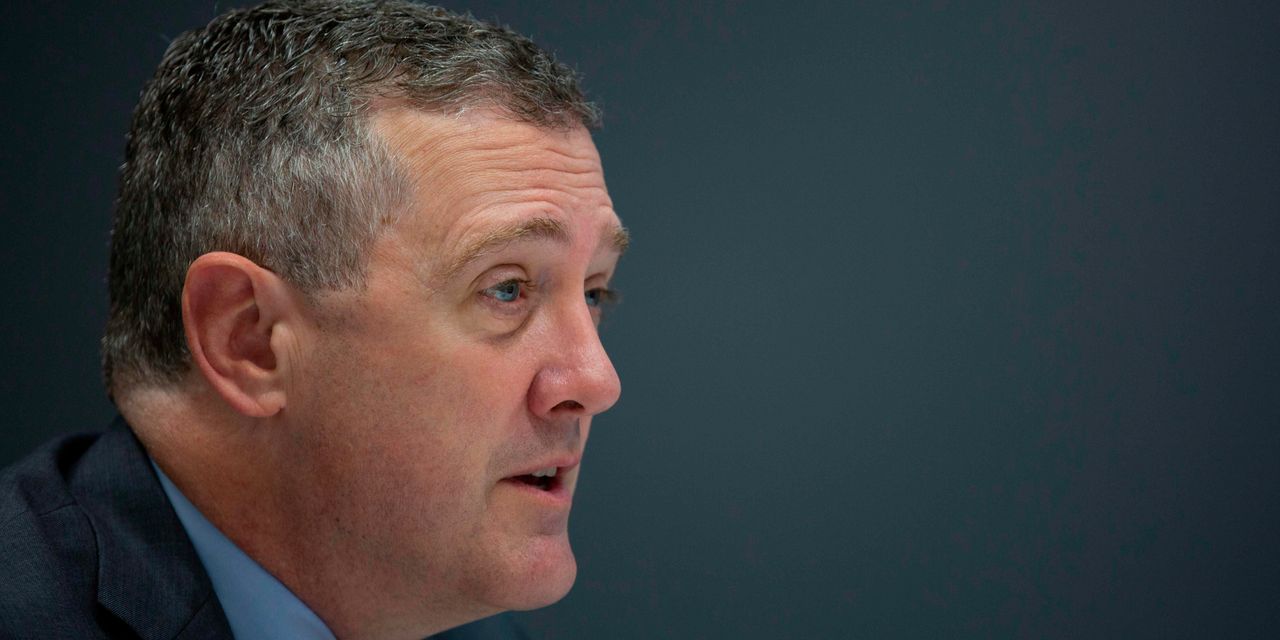
Ever since the pandemic struck last year, St. Louis Fed President James Bullard has been one of the most optimistic members of the U.S. central bank, predicting early and often that the economy could rebound strongly — well ahead of his colleagues.
But that doesn’t mean Bullard projects an early exit from the Fed’s easy policy. In conversations with reporters on Tuesday, Bullard said that his “dot” on the Fed’s “dot plot” in March shows no rate hike through the end of 2023. It will stay there until Bullard sees actual evidence of strong growth this year.
‘I am continuing to see us near zero through 2023,” Bullard said.
“My main concern is that we not start to pull [any move to exit] forward before we see whether the data actually is consistent with the very strong forecast for 2021,” he said.
Bullard is forecasting “a pretty good” 2021, with U.S. gross domestic product accelerating to a 6.5% annual growth rate, inflation picking up to a 2.5% annual rate and the unemployment rate falling to 4.5%, from 6.2% in February.
“I want to see those numbers before we contemplate any changes to monetary policy,” Bullard said.
There are even “upside risks” to the forecast, Bullard said, meaning potentially an even better performance. The downside risks, mainly a resurgence of COVID-19, are waning, he added.
The Fed has also said it will continue to purchase $80 billion of Treasurys and $40 billion of mortgage-backed securities until there has been “substantial further progress” in meeting the Fed’s goals of maximum employment and stable 2% inflation.
Asked if his forecast for 2021 would meet the standard needed to taper the purchases, Bullard said the Fed hasn’t started the debate on when to taper and won’t until later this year, and even then “only if we actually see all the good things happening that we’re now projecting to happen.”
“We are still in a crisis. It could go the wrong way. So we really want to get the pandemic behind us before we start contemplating changes,” Bullard said.
Markets are pricing in the first rate hike sometime in 2022. Investors are worried that inflation might get out of hand.
The St. Louis Fed president said he thinks inflation will rise above the Fed’s 2% target in 2021 and 2022, but that rise is actually helpful, not harmful.
The higher inflation will “recenter,” or push up, investor inflation expectation to 2%, he said. By some measures, investors are doubting the central bank’s commitment to allow inflation to move above 2%. This keeps the Fed always facing the danger of having to push rates down to zero and keeps growth sluggish.
Essentially, the policy Bullard described is the polar opposite of the “opportunistic” disinflation used by former Fed Chairman Alan Greenspan in the 1980s and 1990s — when he took advantage of downturns and recession, and the low inflation rates than accompanied them, to ratchet inflation expectations down from 4% to 2%.
As a result, the Greenspan Fed didn’t have to jam inflation down with a major recession.
But Bullard said it wasn’t really right to call the current policy “Greenspanian” because the former Fed chair never once moved to raise inflation expectations.
Earlier Tuesday, Dallas Fed President Robert Kaplan revealed that he was one of the four “dots” projecting a rate hike in 2022. There are seven Fed officials who expect rate hikes in 2023.
Read: Fed’s Kaplan on front-foot for possible policy shift
Stocks closed lower Tuesday DJIA, -0.94% SPX, -0.76% COMP, -1.12% on concerns that interest rates might move higher at a faster pace than anticipated.










Add Comment